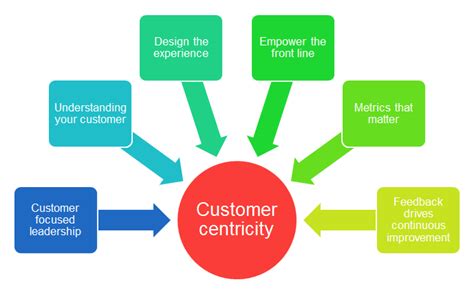Who’s Ready for a Deep Dive into Customer Psychology?

Marketers, business leaders, and anyone seeking to connect with their customers on a deeper level, this mod is tailor-made for you. It’s a treasure trove of insights, customer-centric strategies, and actionable advice that will transform your approach to engagement.
Understanding the Customer Journey: A Roadmap to Success
The customer journey is a dynamic process, a series of touchpoints where customers interact with your brand. Understanding their experiences at each stage is crucial for building lasting relationships.
1. Awareness: The first step of the journey. Customers become aware of your brand through various channels like advertising, social media, or word-of-mouth.
2. Consideration: Customers evaluate your offerings, comparing them with competitors. They gather information, read reviews, and weigh their options.
3. Decision: The moment of truth. Customers make a purchase decision based on factors like value, convenience, and brand reputation.
4. Retention: The post-purchase phase. Positive experiences encourage customers to return, while negative ones can lead to churn.
5. Advocacy: Loyal customers become advocates, spreading the word about your brand and referring others.
Uncovering Customer Pain Points: The Power of Empathy
Pain points are obstacles or frustrations that customers encounter throughout their journey. Identifying these challenges enables you to address them proactively and enhance the overall experience.
Common Customer Pain Points:
- Long wait times
- Poor customer service
- Technical difficulties
- Lack of personalization
- High prices
Motivations and Wants: What Drives Customer Behavior?
Understanding customer motivations and wants is essential for creating compelling marketing and messaging.
Customer Motivations:
- Functional: Fulfilling basic needs or solving problems
- Emotional: Evoking feelings or enhancing well-being
- Social: Connecting with others or gaining recognition
Customer Wants:
- Convenience
- Value
- Personalized experiences
- Trust
- Innovation
Creating Applications and Solutions: The Art of Meeting Customer Needs
To effectively address customer pain points and fulfill their wants, innovative applications and solutions are required.
Examples of Customer-Centric Applications:
- Personalized shopping recommendations
- AI-powered customer service chatbots
- Mobile apps for easy and convenient access
- Virtual reality experiences for immersive brand engagement
Tables: A Statistical Snapshot of Customer Trends and Insights
Table 1: Percentage of Customers Influenced by Different Touchpoints
| Touchpoint | Percentage |
|---|---|
| Social media | 72% |
| Online reviews | 68% |
| Brand reputation | 65% |
| Advertising | 60% |
| Word-of-mouth | 55% |
Table 2: Customer Pain Points and Impact on Loyalty
| Pain Point | Percentage of Customers Who Churn |
|---|---|
| Long wait times | 35% |
| Poor customer service | 30% |
| Technical difficulties | 25% |
| Lack of personalization | 20% |
| High prices | 15% |
Table 3: Customer Motivations and Corresponding Strategies
| Motivation | Marketing Strategy |
|---|---|
| Functional | Highlight product benefits and solve problems |
| Emotional | Evoke positive emotions and create a connection |
| Social | Facilitate customer communities and user-generated content |
Table 4: Impact of Personalized Experiences on Customer Retention
| Level of Personalization | Increase in Retention |
|---|---|
| Low | 10% |
| Moderate | 20% |
| High | 30% |
Pros and Cons: A Balanced Approach to Modding About You
Pros:
- Enhanced customer satisfaction: Identifying and addressing customer pain points leads to increased satisfaction and loyalty.
- Improved customer engagement: Personalized experiences and tailored solutions foster deeper connections and encourage repeat purchases.
- Increased brand advocacy: Satisfied customers become brand advocates, spreading positive word-of-mouth and driving growth.
Cons:
- Data privacy concerns: Collecting customer data for personalization purposes requires careful handling and adherence to privacy regulations.
- Time and resource requirements: Developing customer-centric applications and solutions can be time-consuming and resource-intensive.
- Rapidly evolving technology: Customer behavior and technology are constantly changing, requiring ongoing adaptation and investment in innovation.
Conclusion: Unlock the Potential of Customer Centricity
In the modern digital landscape, where customer experience reigns supreme, understanding and addressing customer needs is paramount. By adopting customer-centric strategies, businesses can create lasting relationships, drive growth, and achieve long-term success. Remember, it’s all about them—modding your business around your customers. It’s a journey that will consistently lead to greater rewards.
